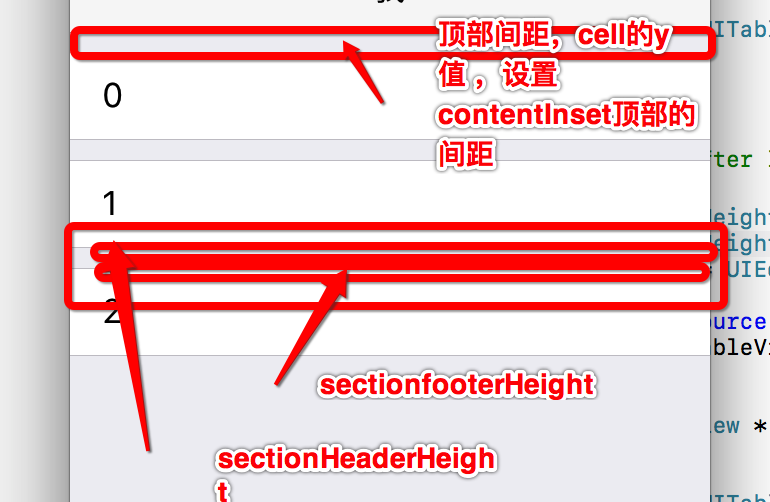一、contentInset(设置顶部间距)
1、当有导航栏、tabBar一些属性时会默认的加上间距。 2、当顶部或尾部有间距时一般是contentInset设置原因。 3、tableview 为Group时顶部的间距,也就是cell的y值,可以打印cell的frame来看看,如果返回全是0,可以延时加载再试下,因为cell的frame可能没有加载出来。 4、这时发现cell的y值不是0,可以通过contentInset来设置。 5、self.tableView.contentInset = UIEdgeInsetsMake(STRMargin - 35, 0, 0, 0)这是Group时的情况; 6、如果是plain发现加上导航或其它工具栏时,明明设置的tableView的x是但是还是有间距,可以关掉它自动适应布局,这个自动适应布局只对第一个控件,且属于scrollView类有效,关掉它, self.tableView.translatesAutoresizingMaskIntoConstraints = NO;
7、查看celL的frame,
dispatch_after(dispatch_time(DISPATCH_TIME_NOW, (int64_t)(2.0 * NSEC_PER_SEC)), dispatch_get_main_queue(), ^{
NSLog(@"%@",NSStringFromCGRect(cell.frame));
});
二、cell的间距
0.可以通过重写cell的frame方法来设置cell的间距。
1、tableView 的contentInset 设置间距,还有设置所有行、列的尾部和头部高度,还有tableview的间距有哪些组成 //最顶部(顶部间距 + 每列或第行的头部间距)、中间( 每列或第行的头部间距+ 每列或第行的尾部部间距)
2、设置所有section的头部和尾部间距。
self.tableView.sectionHeaderHeight = 10;
self.tableView.sectionFooterHeight = 10;
3、设置每个section的头部或尾部间距。
- (CGFloat)tableView:(UITableView *)tableView heightForFooterInSection:(NSInteger)section{
if (section == 1) {
return STRMargin;
}
return 0;
}
- (CGFloat)tableView:(UITableView *)tableView heightForHeaderInSection:(NSInteger)section{
}

3、解决tableView的tableViewFooterview的contentSize不正确的问题
//这里更新好footView高度了以后,再设置下面代码,有时候明明设置好了,但还是没起作用,可以更新下
UITableView *tableView = (UITableView *)self.superview; //这里的self必须在以前加到tableView的footerView上。
tableView.tableFooterView = self;
[tableView reloadData];